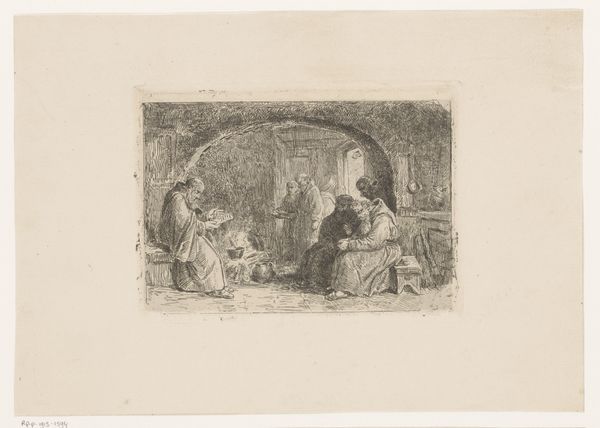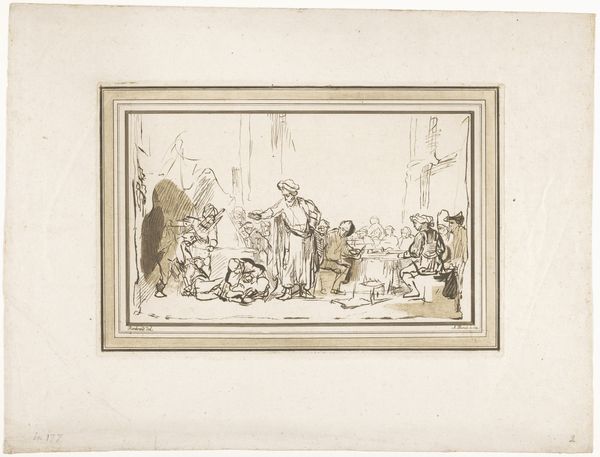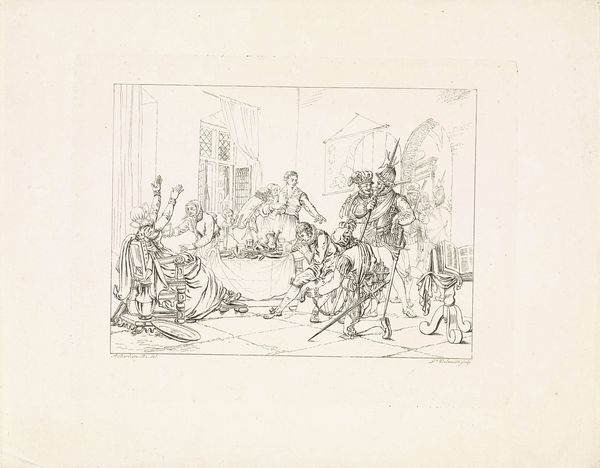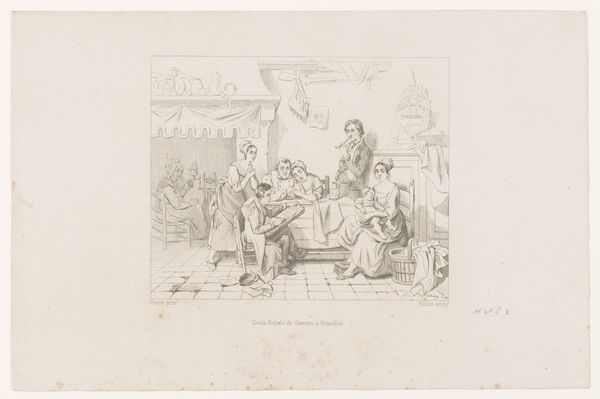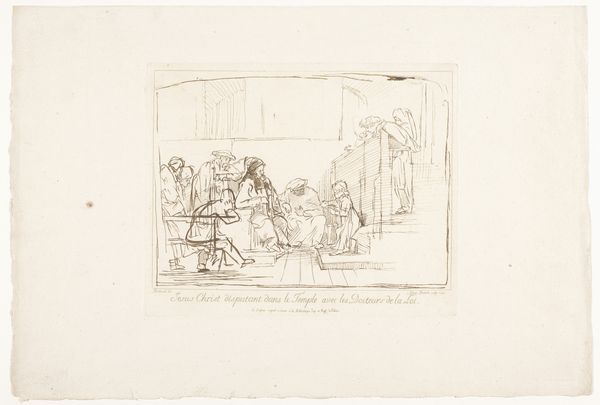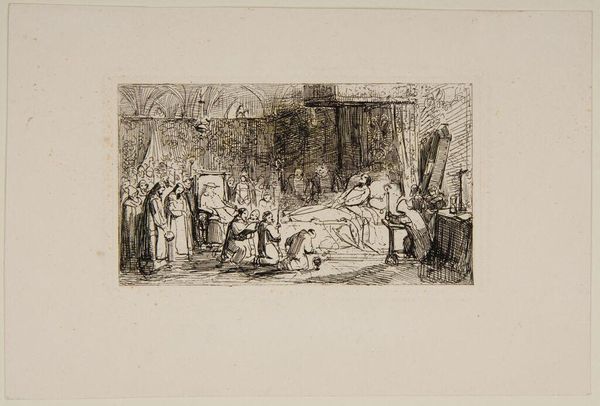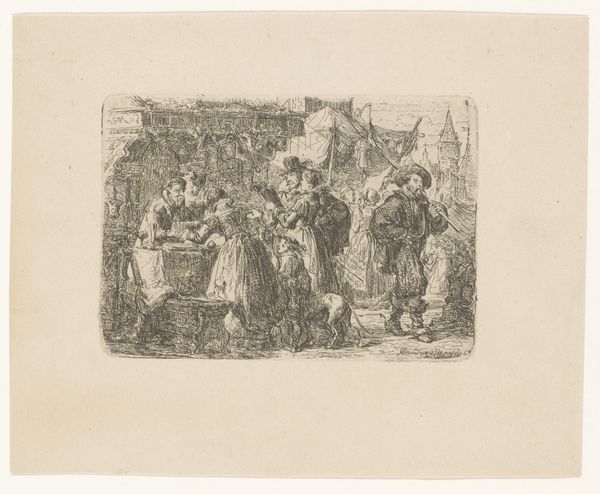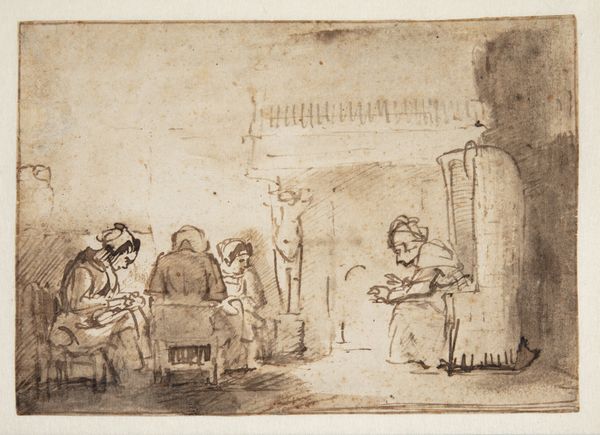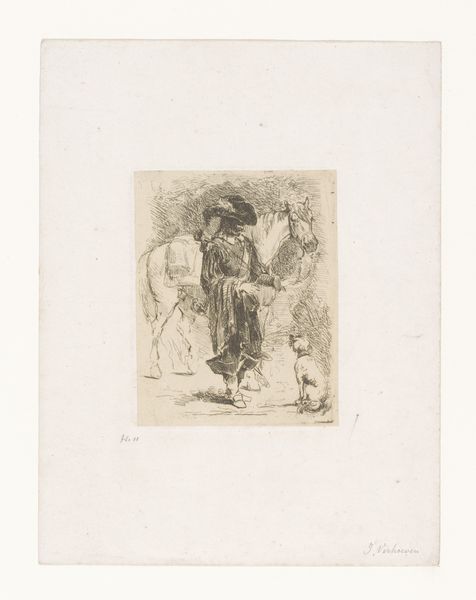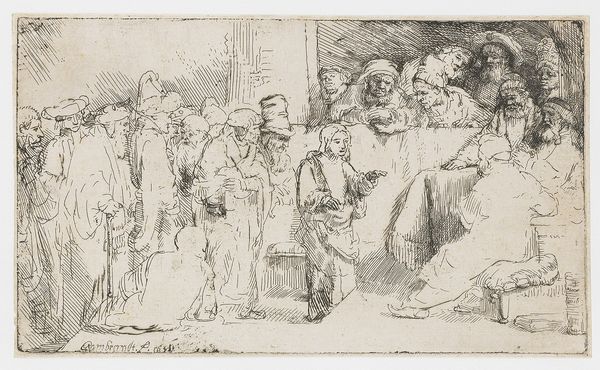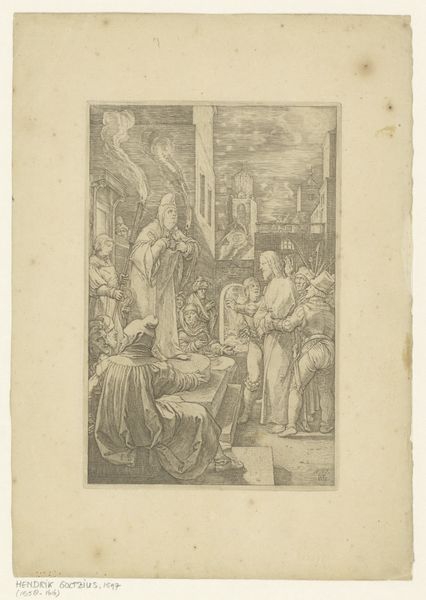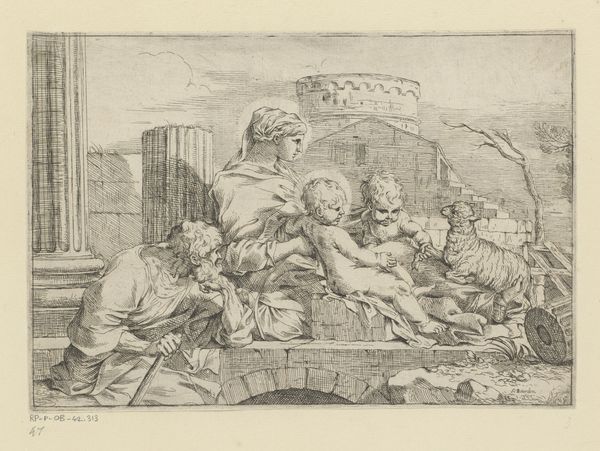
drawing, etching, paper, ink
#
drawing
#
ink drawing
#
narrative-art
#
baroque
#
etching
#
etching
#
figuration
#
paper
#
ink
#
genre-painting
Dimensions: height 178 mm, width 292 mm
Copyright: Rijks Museum: Open Domain
Curator: Look at this etching by Johann Daniel Laurentz, created around 1756. It's called "Staande man in een herberg laat iemand knevelen," or "Standing Man in an Inn Has Someone Gagged." It has quite the narrative packed into it. Editor: It's got such a light, almost ephemeral quality. Like a half-remembered scene sketched in a dream. What grabs me is the contrast between the coarse scene on the left and the more relaxed people around a table on the right, all conveyed with what looks like quick, gestural ink strokes. Curator: Right, Laurentz was working in the baroque tradition, yet this is very much genre painting, reflecting everyday life and manners of the period. What you perceive in the line work reveals a social order based on force and display. One side violently controls others in the shadows, while a group carries on socializing unaware. The composition highlights that. Editor: The choice of etching feels important too. The accessibility of printmaking would have made an image like this more widely available. Curator: Indeed. These kinds of prints circulated widely in the 18th century, often serving as visual commentaries on social and political happenings. There’s something interesting about the combination of that accessibility and the violence occurring within this intimate, interior setting. Think of the social dynamics within the Dutch taverns during that era and you get a picture of the artist reflecting on those public sites where such inequalities played out in reality. Editor: Yes, etching allowed the artist to produce multiple originals to critique power structures and those shadowed dealings of coercion at the level of everyday commerce. This is Baroque etching but a direct, un-glamorized scene. Curator: Seeing this work invites us to examine the social function of imagery, who makes them, for whom, and under what conditions. Editor: Agreed, and examining Laurentz’s rendering reminds us that artistic choices can shape perceptions of power and exploitation within otherwise mundane settings. Curator: Well put. Editor: Thanks.
Comments
No comments
Be the first to comment and join the conversation on the ultimate creative platform.
